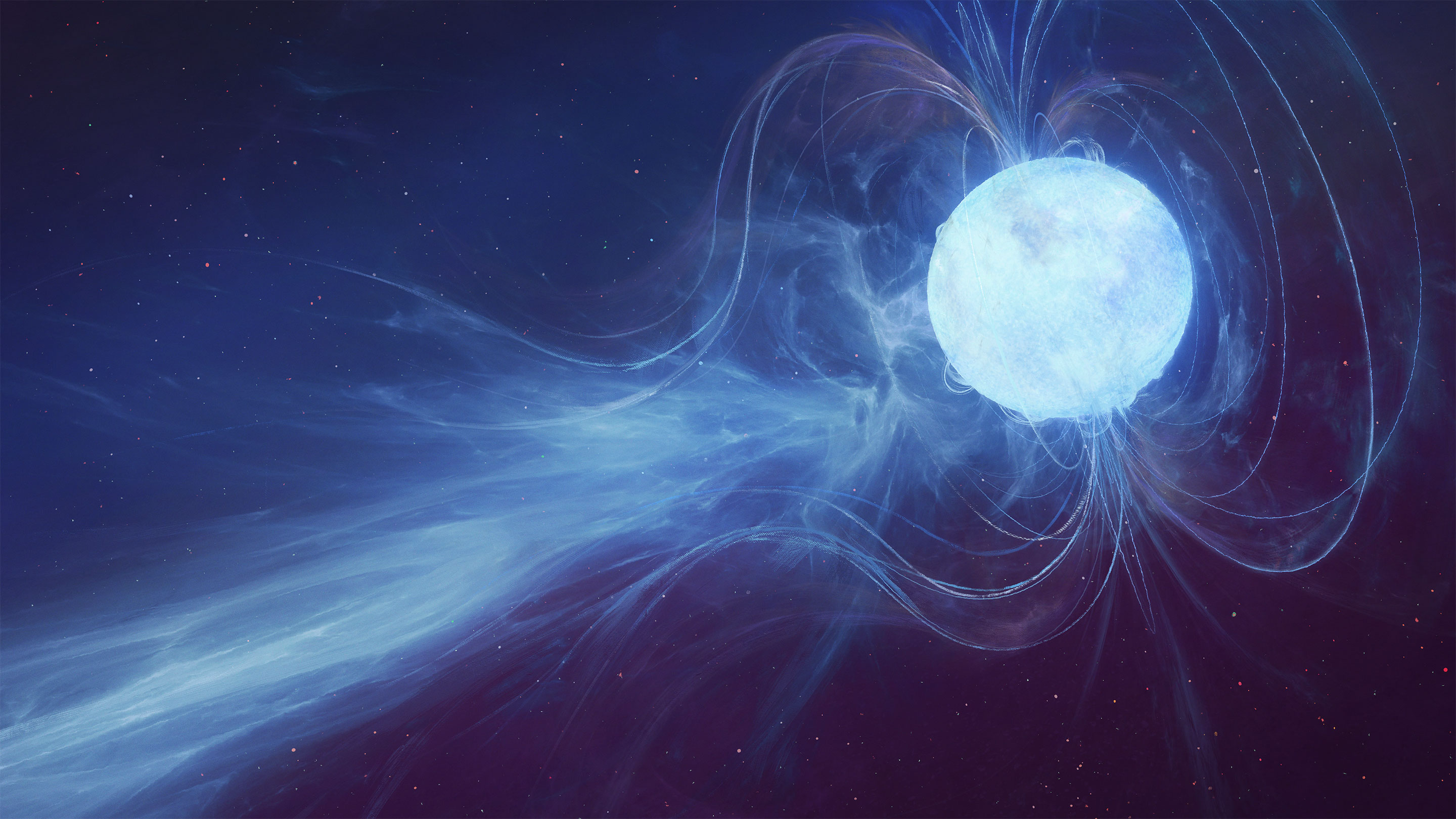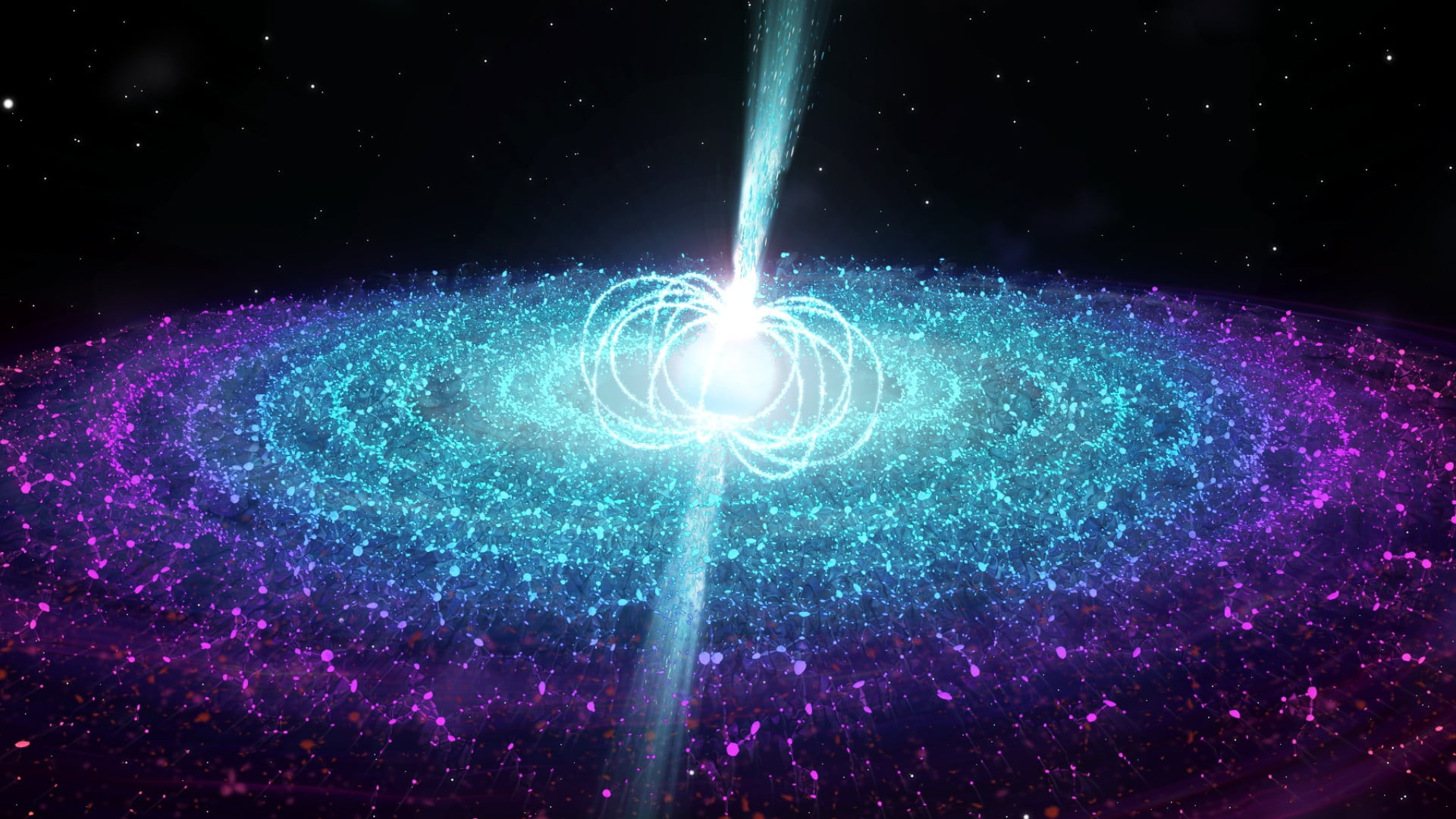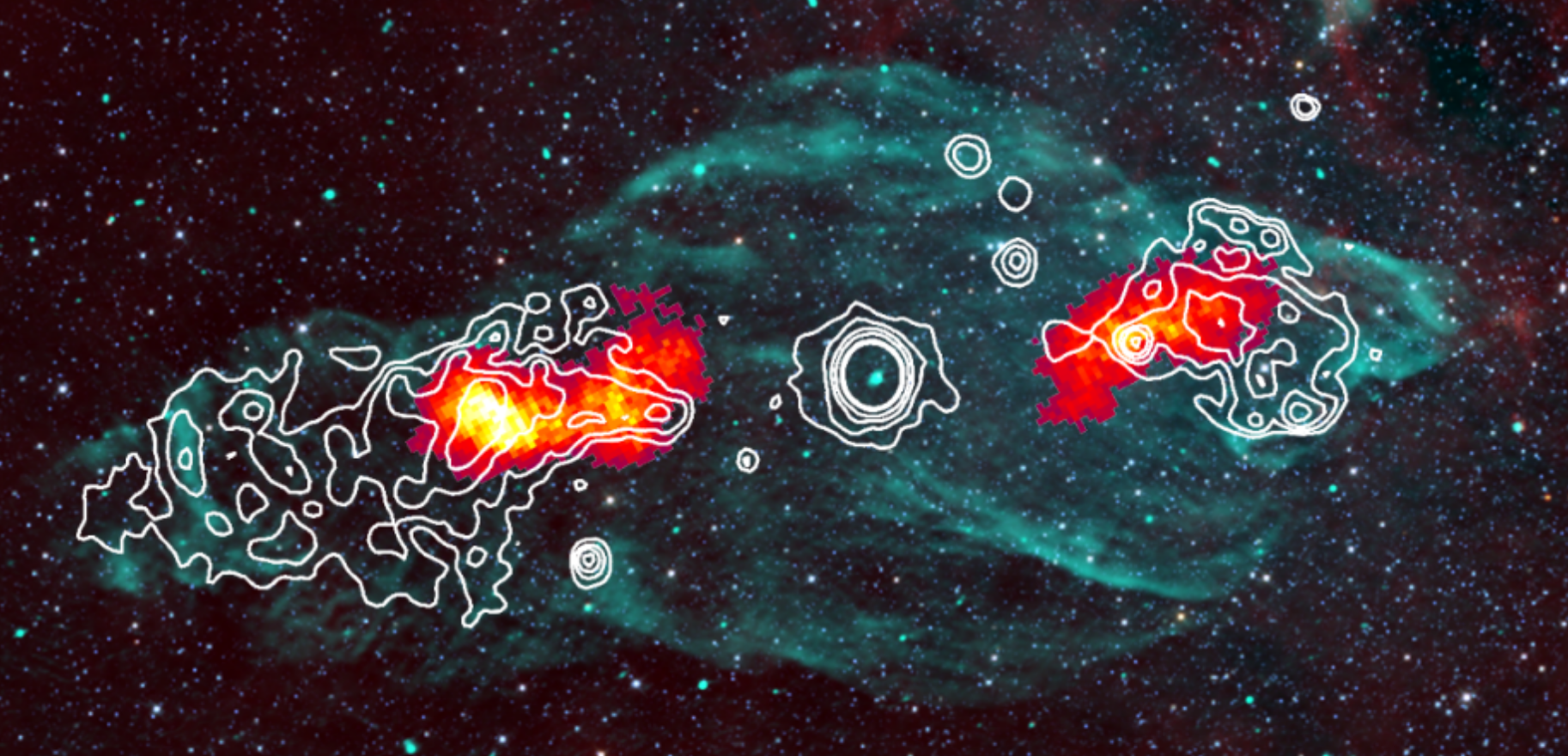The research projects offered in ASPIRE cover a wide range
of topics. You can choose up to three projects
when you apply via the form (in descending order of interest).
Uncovering the mysterious origins of fast radio bursts: how slow can they go?
Ziggy Pleunis (z.pleunis@uva.nl, staff) and Jason Hessels with the AstroFlash (https://astroflash-frb.github.io/) team
Fast radio bursts (FRBs) last for much less than the blink of eye and originate in distant galaxies, billions of lightyears away. We are still trying to understand what produces the FRBs. The hyper-magnetic neutron stars known as magnetars are a leading contender, but can they explain the variety of different FRBs we have observed? Some FRBs repeat, whereas others apparently do not. Some FRBs are found near star-forming regions in their host galaxies, whereas others live where only old stars are expected. This is confusing, and suggests that there may be multiple types of FRB sources. Recent years saw the discovery of longer-than-typical FRBs with durations up to a few seconds. Are they a distinct class of bursts or are they produced by the same sources and physical processes?
OBJECTIVE:
This year, there will be two projects in the AstroFlash group. They aim to find
longer-duration FRBs using data from the CHIME and/or LOFAR telescopes. You'll get access to
prerecorded data sets and will work on the visualization tools and algorithms to first identify and
then characterize astrophysical bursts.
PREREQUISITES:
No prior knowledge of the field is required but experience with programming in Python or another language is strongly preferred.
RESOURCES:
This project can be performed using a consumer laptop that runs Python; you will get remote access to one of our compute clusters for more demanding processing tasks. We will lend a laptop computer if need be.
Cannibalistic neutron stars make a mess: accretion and jets from neutron stars
Nathalie Degenaar (degenaar@uva.nl, staff)
with the TORCH research group
Many of the neutron stars (stellar remnants that are the densest objects after black holes) known in
the Milky Way live in binary systems where they capture and accrete the outer layers of their
companion star with their strong gravity. Part of this captured material falls onto the neutron star via
an in-spiralling disk, but some can instead of launched into surrounding space in powerful jets.
These binaries emit across the full electromagnetic spectrum, where different parts of the spectrum
originate from different regions in the system. By unravelling what processes cause the shape of the
spectrum, we can therefore understand how strong the jets from these systems are.
OBJECTIVE:
In this project, you will analyse infrared observations from the Magellan telescope of a
large number of these neutron star binaries and combine them with data taken at other wavelengths.
Your aim is to model these broad-band spectra to investigate how many of them show evidence for
jet emission in the infrared band.
PREREQUISITES:
Experience with programming in Python another language is strongly preferred.
RESOURCES:
The project will be performed on a standard laptop, preferably operating Linux or MacOS. If needed, a suitable laptop
will be provided
Particle acceleration in powerful jets from black holes in our Galaxy
Laura Olivera-Nieto and Marc Klinger-Plaisier
Some extreme environments in the Universe are capable of accelerating particles up to
energies a million times greater than those ever achieved by human experiments. These
particles, known as cosmic rays, carry away large fractions of the total energy of their
sources, influencing both the sources themselves and their environment. Despite decades
of research, much is not understood about where and how these particles are accelerated
to such energies.
An ideal candidate site for particle acceleration are the fast-moving, magnetized outflows
(“jets”) that are launched as a consequence of accretion onto black holes. For example,
inside our Galaxy we find jets launched by stellar-mass black-holes which are accreting
matter from a companion star. These objects, usually called “x-ray binaries” have recently
been discovered to be also sources of very-high-energy gamma-ray light.
Because gamma-ray light reveals the presence of high-energy particles, x-ray binaries
might be able to account for the most energetic cosmic rays in our Galaxy. It is however
unclear why some x-ray binaries seem to produce huge amounts of gamma-rays, yet
others seem to be much more quiet.
OBJECTIVE:
In this project you will use very-high-energy gamma-ray data from the
H.E.S.S. telescopes, together with existing archival data from Galactic x-ray binaries
hosting a black hole. You will investigate the emission produced by accelerated particles
in these systems, and look for patterns which could explain the observations using
modeling. The scope of this project can emphasize high energy data reduction and
analysis techniques or the modeling aspect using multi-zone jet models, depending on
your preference.
PREREQUISITES:
No prior knowledge of the field is required but some experience with
programming in python would be beneficial.
RESOURCES:
A standard computer or laptop is sufficient, ideally with Linux or OS but
Windows is acceptable too.
Searching for ices on Saturn’s largest moon
Alessandra Candian (a.candian2@uva.nl, sta5) with advisor Elle Hanson
Titan, the largest moon of Saturn, has a thick atmosphere with clouds and precipitation,
but unlike Earth’s water clouds, the clouds on Titan consist of complicated mixtures of
organic ices. One of Titan’s most prominent cloud formations is the polar hood, a giant
cloud that covers the entire polar region from mid fall until early spring. Although this cloud
is thought to play important roles in the atmospheric heating and cooling, global
circulation, and precipitation of organic matter, the cloud’s composition during the fall
season has not been thoroughly examined. Which ice species are present in the cloud?
Does the composition vary with latitude, time, or altitude? When and where do di5erent
species first appear, and how do their abundances change over time? We can seek to
answer these questions using data from the NASA/ESA Cassini spacecraft mission. This
project involves analyzing data from Cassini’s Visible and Infrared Imaging Spectrometer
(VIMS) instrument to identify the spectral signatures of organic ices in Titan’s south polar
hood cloud.
OBJECTIVE:
Search for signs of organic ices in spectral imagery of Titan’s south polar
atmosphere.
PREREQUISITES:
Some programming experience is preferred. Prior experience with
spectroscopy, remote sensing, or image analysis will be helpful, but not required.
RESOURCES:
This project can be completed using a standard laptop.
Mass-transfer under extreme circumstances
Silvia Toonen (S.G.M.Toonen@uva.nl, staff) with advisor Tjarda Boekholt
Mass-transfer is commonly studied for binary stars with circular orbits.
As one of the stars overflows its Roche lobe, mass transfers from the donor to the accretor in a
gradual manner.
Mass-transfer in more extreme dynamical environments, such as eccentric binaries and star clusters,
is also expected to occur, but is less well understood.
OBJECTIVE:
This project consists of performing simulations of a variety of two-body systems with mass-transfer
included.
Analysis of the simulation data will lead to a better overview of the evolution of stellar masses and
orbits in extreme environments.
PREREQUISITES:
Highly motivated to learn about binary stars with mass-transfer, i.e. non-conservative 2-body
Previous experience with data analysis and visualization.
RESOURCES:
The student will be able to run simulations on computing clusters in Amsterdam.
Their own standard laptop would be handy but is not required.
On the kinematic properties of Be/X-ray binaries
Lex Kaper (L.Kaper@uva.nl, staff) with the Massive Stars research group
Massive stars, that is stars with more than 8 times the mass of our Sun, strongly impact their
surroundings. A majority of them are found in tight binary systems, in which the two stars often
interact, drastically changing the live cycle of massive stars. Those binary systems can lead to
exotic objects such as high-mass X-ray binaries (HMXBs), systems of a massive OB-type star that
is orbited by a compact object, a neutron star or a black hole. Accretion of material from the
massive-star wind, or via Roche-lobe overflow, produces X-ray emission. HMXBs are expected to
move away from their birthplace after the supernova preceding the formation of the compact star in
the system. With the supernova mass is lost from the system leading to a recoil velocity of the order
of the orbital velocity before the supernova.
It has been suggested that different supernova mechanisms, producing the compact object in the
system, would lead to observable differences in the kinematical properties of such objects.
OBJECTIVE:
In this project, you will analyze multi-band observations from different telescopes of a
sample of massive stars and combine them with kinematic data from the Gaia satellite. Your aim
will be to combine these data sets to investigate the previous binary history of the systems.
PREREQUISITES:
Some experience with Python would be helpful.
RESOURCES:
the project will be performed on a standard laptop, preferably operating Linux or
MacOS.



